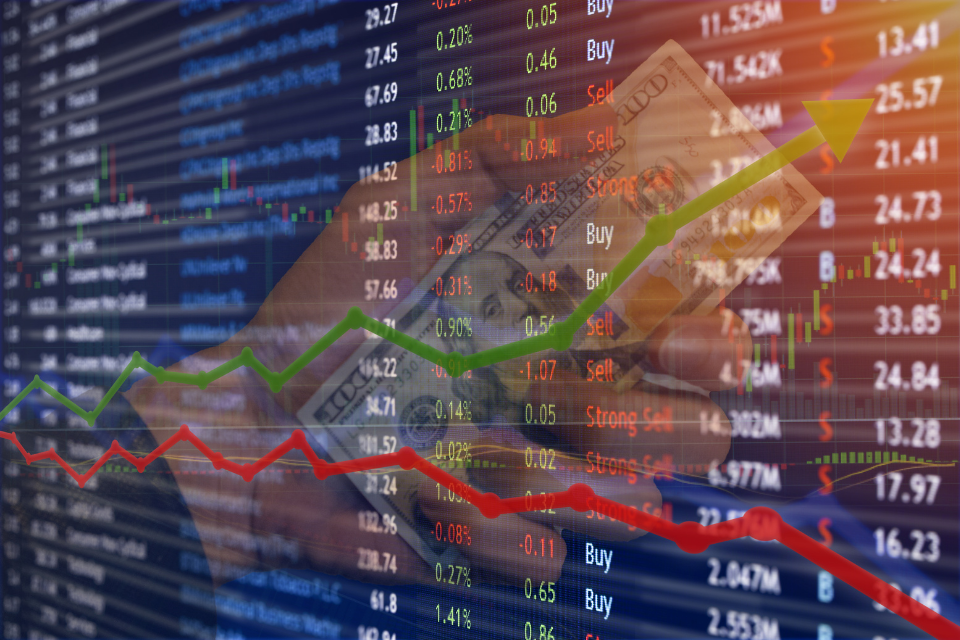Cryptocurrencies have become an indispensable part of the financial world. The cryptocurrency ecosystem, which years ago was viewed with skepticism and seen as the unknown of a new technology, has now reached billion-dollar market volumes. The rapid rise in cryptocurrency prices is attracting more and more attention from investors, economists and enthusiasts. But how exactly are these prices influenced, particularly by the traditional stock exchanges? In this post, we will explore the intricate relationship between the stock market and cryptocurrency prices.
The Interconnected World of Finance
Our financial landscape is more interconnected than ever before. Cryptocurrencies, despite being fundamentally different from stocks, often react to the same market influences. Major economic events, geopolitical developments, and macroeconomic indicators can affect both the stock market and cryptocurrency prices.
For instance, when a significant geopolitical event occurs, it can create widespread uncertainty. Investors often respond by moving their assets to perceived safer investments. This is known as a “flight to safety,” where investors might flock to gold, bonds, or even certain cryptocurrencies, pushing their prices up. On the other hand, a stable and bullish stock market might lead to increased investor confidence, encouraging investment in riskier assets, including various cryptocurrencies.
Moreover, technological advancements and regulatory changes in the stock market can ripple through to the cryptocurrency market. Innovations like blockchain technology are continuously shaping the landscape of both traditional finance and cryptocurrencies. When a new technology emerges that promises to enhance security or efficiency, it can boost investor sentiment across the board, leading to a rise in both stock and cryptocurrency prices.
Market Sentiment and Investor Behavior
Market sentiment plays a crucial role in determining cryptocurrency prices. Sentiment in the stock market often spills over into the cryptocurrency market. When investors are optimistic about the future of the economy, they are more likely to invest in cryptocurrencies alongside stocks.
Social media, news outlets, and influential figures can sway investor sentiment. A tweet from a well-known entrepreneur or a positive news article about a cryptocurrency can lead to a surge in its price. Conversely, negative news or a bearish outlook in the stock market can result in a drop in cryptocurrency prices as investors become more risk-averse.
Another critical aspect of market sentiment is the Fear of Missing Out (FOMO). In bullish stock markets, FOMO can drive investors to seek out high-reward opportunities in cryptocurrencies. This behavior is particularly evident when investors see rapid gains in cryptocurrency prices and do not want to miss out on potential profits. As a result, they pour money into cryptocurrencies, driving prices even higher.
Liquidity and Trading Volume
Liquidity, or the ease with which an asset can be bought or sold without affecting its price, is a significant factor in determining cryptocurrency prices. High liquidity in the stock market can spill over into the cryptocurrency market, facilitating smoother and more efficient trades.
When stock markets experience high trading volumes, it often correlates with increased activity in cryptocurrency exchanges. This increased activity can lead to higher liquidity in the cryptocurrency market, making it easier for investors to buy and sell digital assets. High liquidity typically results in more stable cryptocurrency prices, as large trades do not cause significant price fluctuations.
Conversely, low liquidity can lead to higher volatility in cryptocurrency prices. In times of financial stress or during market downturns, liquidity can dry up, causing sharp price swings. Investors might struggle to execute trades without significantly impacting prices, leading to a more volatile and unpredictable market.
Technological Developments and Innovations
Technological advancements in both the stock market and the cryptocurrency market significantly impact cryptocurrency prices. Innovations such as high-frequency trading (HFT), algorithmic trading, and blockchain technology have revolutionized how trades are executed and how information is disseminated.
In the stock market, HFT and algorithmic trading have increased the speed and efficiency of transactions. These technologies enable traders to capitalize on minute price differences, enhancing market liquidity. As these technologies evolve, they are also being adopted by cryptocurrency exchanges, leading to faster and more efficient trading.
Blockchain technology, the backbone of cryptocurrencies, has also influenced the stock market. Companies in the stock market that adopt blockchain technology for their operations or transactions can see a positive impact on their stock prices. This, in turn, can affect investor sentiment and lead to increased interest and investment in cryptocurrencies. As more companies embrace blockchain, the synergy between the stock market and cryptocurrency market strengthens, influencing cryptocurrency prices.
Regulatory Environment and Legal Developments
Regulatory changes in the stock market can have a profound impact on cryptocurrency prices. Governments and regulatory bodies around the world are continually assessing and updating their policies regarding digital assets. These regulations can either foster growth or create obstacles for the cryptocurrency market.
For instance, when a country announces favorable regulations for cryptocurrency trading and investment, it can lead to a surge in cryptocurrency prices. Investors feel more confident and secure, knowing that their investments are protected by law. Conversely, stringent regulations or outright bans can lead to a decline in cryptocurrency prices as investors withdraw their funds to avoid legal repercussions.
The regulatory environment in the stock market also sets a precedent for the cryptocurrency market. When traditional financial institutions and stock exchanges receive clear regulatory guidance, it can pave the way for similar regulations in the cryptocurrency market. As a result, positive regulatory developments in the stock market can create a more stable and predictable environment for cryptocurrencies, influencing their prices positively.
Moreover, the introduction of cryptocurrency-based financial instruments, such as futures and ETFs, on traditional stock exchanges has bridged the gap between the two markets. These instruments allow traditional investors to gain exposure to cryptocurrencies without directly owning them. As these products gain popularity, they can lead to increased demand for cryptocurrencies, driving up their prices.
The Future of Cryptocurrencies and Stock Markets
As we look ahead, the relationship between cryptocurrency prices and the stock market is likely to continue evolving. The integration of blockchain technology into traditional financial systems will keep blurring the lines between the two markets. Investors will increasingly view cryptocurrencies as a viable asset class, influenced by similar factors that affect stocks.
One possible development is the rise of decentralized finance (DeFi), which aims to recreate traditional financial systems using blockchain technology. DeFi platforms offer services such as lending, borrowing, and trading without intermediaries, potentially disrupting traditional finance. As DeFi grows, it could lead to more direct interactions between cryptocurrencies and stock markets, further intertwining their prices.
Additionally, the growing acceptance of cryptocurrencies by institutional investors will play a significant role in shaping their prices. As more institutions allocate funds to cryptocurrencies, we can expect increased stability and reduced volatility. Institutional investment can also lead to greater regulatory scrutiny and the development of more sophisticated financial products, aligning the cryptocurrency market more closely with traditional stock exchanges.
A Symbiotic Relationship
In conclusion, the relationship between cryptocurrency prices and the stock exchange is complex and multifaceted. Market sentiment, liquidity, technological advancements, and regulatory developments all play crucial roles in shaping cryptocurrency prices. While cryptocurrencies operate on decentralized platforms, they are not isolated from the broader financial ecosystem. The traditional stock market and cryptocurrencies influence each other in profound ways, creating a dynamic and interconnected landscape.
As we continue to witness the evolution of both markets, understanding these interconnections will be essential for investors and enthusiasts alike. By staying informed and adapting to the changing financial environment, one can navigate the exciting world of cryptocurrencies with greater confidence and insight.


